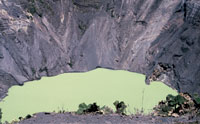When it comes to evidence, many people think that the fossils prove evolution. You may have seen a diagram of the geologic column figure 1 with pictures of plants and animals showing how evolution progressed over millions of years. It gives you the impression that fossils are always found in the same definite order and that no fossils are ever found ‘in the wrong place’. You may be surprised to learn that fossils are being found “in the wrong place” all the time. Out of place, that is, compared with the areas, or ranges, shown for them on the geological [More]
Thousands of years? Nope-just decades …read more Read more here: creation.com
Does the curious mosaic cobbled from the Dmanisi dig demonstrate we are all one family? …read more Read more here: AIG Daily
Remarkably advanced tyrannosaur too low on the evolutionary staircase complicates dinosaur lineage. …read more Read more here: AIG Daily
Stunning and controversial human skull fossils from the country of Georgia will force scientists to rethink everything they know about the story of human evolution. More… …read more Read more here: icr.org
How did birds get their wings? This “classic major evolutionary transition” fails to take flight in the fossil record. …read more Read more here: AIG Daily
Expanding underwater territory claimed as key to the Cambrian conundrum. …read more Read more here: AIG Daily
Fossils of many modern birds are found with dinosaurs, but almost no museums display them. …read more Read more here: creation.com
The human evolution story could be in for a major reshuffle. But how might we make sense of this find in the biblical framework? …read more Read more here: creation.com
European scientists discovered the oldest angiosperm-like pollen ever found, and it supposedly predates previously discovered angiosperm pollen by more than 100 million years! More… …read more Read more here: icr.org
By Ken Ham We have many staff members who are continually traveling around America and overseas to present biblical truths in a variety of settings. A week and a half ago, our staff astronomer Dr. Danny Faulkner once again was a leader of a raft trip down the Colorado River inside the Grand Canyon. In the evening, using his portable but powerful telescope (a Questar 3.5 inch), he was able to give talks on how astronomy points to the accuracy of the Bible and to the fact that our world is obviously created. He also did daytime programs of solar [More]
Not old enough for Jurassic Park, this mosquito likely filled up on North American bird blood long ago. …read more Read more here: AIG Daily
A second noble gas testifies to the biblical 6,000 years …read more Read more here: creation.com
How do we handle conflicts between geology and the Bible? …read more Read more here: creation.com
The researchers concluded that Aspidella traces look like animal tracks—specifically, tracks that today’s sea anemones might have made. More… …read more Read more here: icr.org
Jaws of life get an evolutionary face-lift from “a bony-fish-like grin.” …read more Read more here: AIG Daily
The Giant’s Causeway, Northern Ireland: colossal volcanic eruptions during Noah’s Flood. …read more Read more here: creation.com
Thousands of large bones entombed in sedimentary rock point to huge watery catastrophe …read more Read more here: creation.com
Using the rapid ascension rates, even extensive granitic batholiths, like the Sierra Nevadas, could have formed in just over 1,000 years. More… …read more Read more here: icr.org
Scientists won’t accept radiometric dates they don’t like, as arguments over Mungo Man show. …read more Read more here: creation.com
A feathered dinosaur? …read more Read more here: creation.com
Ongoing excavation uncovers a fourth Triceratops in Cretaceous dig. …read more Read more here: AIG Daily
Siccar Point, a Scottish site revered by evolutionary geologists worldwide as the birthplace of their long-age philosophy, actually gives powerful evidence for the Genesis Flood. …read more Read more here: creation.com
Understanding the timing of geological events in the light of Scripture. …read more Read more here: creation.com
Dinosaur fossils have been found on every continent on Earth; humans have inhabited, and continue to inhabit, every continent on Earth. Thus, it would seem that if dinosaurs and humans really did live as contemporaries at one time, as creationists contend, human fossils would have been found alongside, near, or in the same strata as dinosaur fossils. So, is there evidence from the fossil record of their coexistence? Admittedly, at times questions like these appear somewhat puzzling, at least on the surface. We know from the biblical record that dinosaurs and humans coexisted (Genesis 1; Exodus 20:11). Furthermore, many ancient [More]
A magical model creates cyclic ice ages from practically nothing. …read more Read more here: AIG Daily
What do GPS measurements and the geophysics of rock motion suggest? …read more Read more here: creation.com
















































